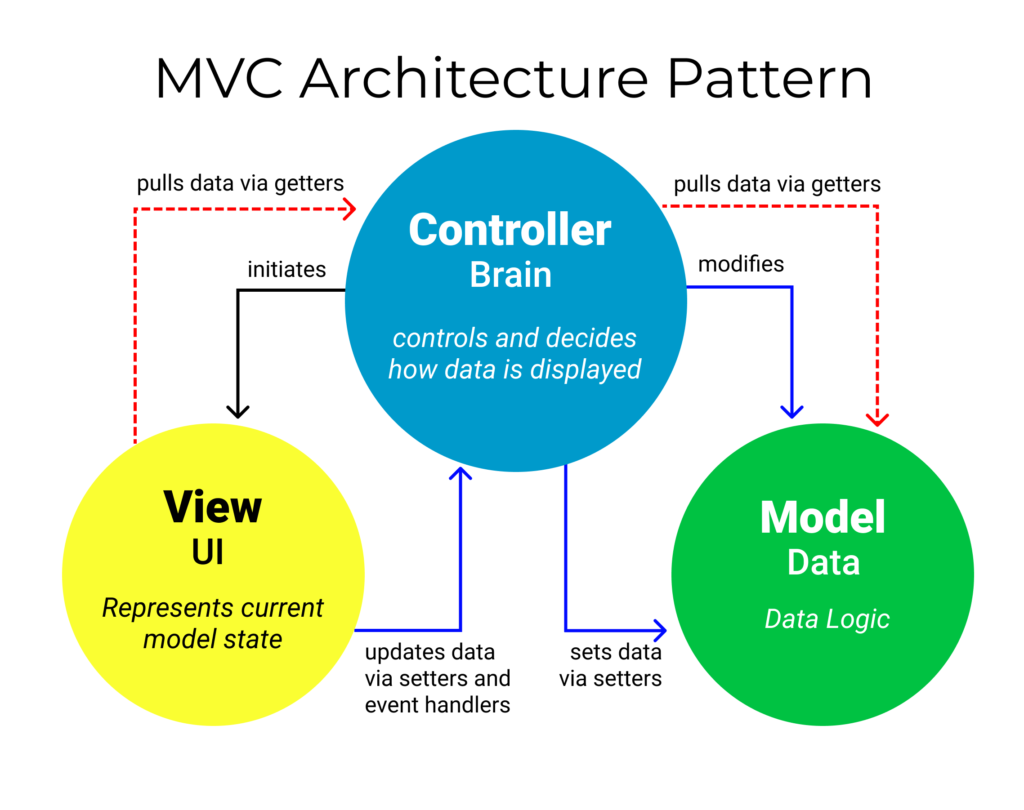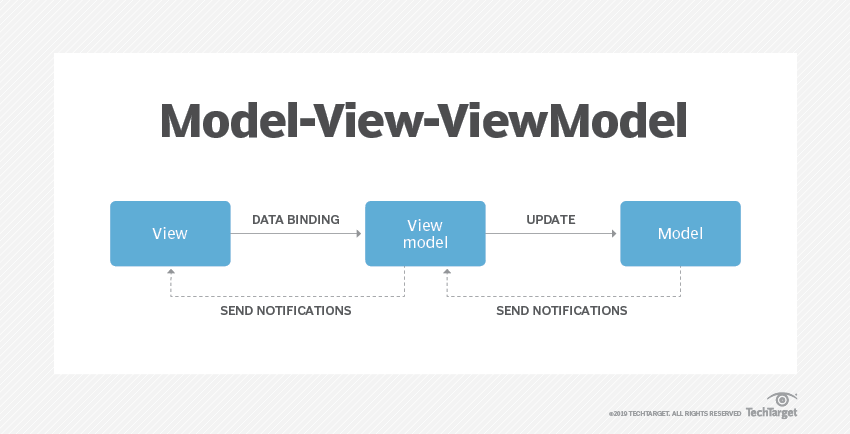When it comes to developing android applications, choosing the right android architecture pattern is essential. Each of the three most popular patterns – Model View Controller (MVC), Model View ViewModel (MVVM), and Model view presenter architecture(MVP) – has its own benefits and drawbacks. In order to make the right decision for your project, it’s important to understand the differences between them.
In this article, we’ll cover the basics of Android architecture pattern, their types, and ways to choose the right pattern for you.
So let’s get started.
What Is An Android Architecture Pattern?
An Android architecture pattern is a pre-defined strategy or template that can be used to solve common problems. What this means for us as android developers is that we don’t have to re-invent the wheel every time we create an application. We can find a problem that’s been solved before and then use the same solution for our own problems. Architecture patterns not only give us a structure to follow, but they also force us to think about how we design and build an application.
What Are MVC, MVP, And MVVM Patterns?
These three architecture patterns are really useful in mobile application development. Thus, let’s understand each pattern in detail.
Model View Controller (MVC):

It is a user interface architectural pattern that separates an application into three interconnected parts: the model, view, and controller. This allows developers to work with each component separately while also making them reusable for other types of interfaces by introducing separate responsibilities.
Example:
Think of an e-commerce application where the model would represent the data about the products (name, price, description, etc.), the view would be responsible for displaying the product information to the user, and the controller would handle the communication between the model and view.
Model View View Model (MVVM):

It is a user interface architectural pattern that separates an application into three interconnected components: the model, view, and ViewModel. The main purpose of this architecture is to cleanly separate the presentation and business logic from the underlying data and allow all three components to be unit tested.
Example:
Think of an e-commerce application where the model would represent the data about the products (name, price, description, etc.), the view would be responsible for displaying the product information to the user, and the ViewModel would handle the communication between the model and view. This would allow us to unit test the business logic and presentation without having to test the underlying data.
Model-View-Presenter (MVP):

It is a user interface architectural pattern that also separates an application into three interconnected components: the model, view, and presenter. This android architecture differs from MVC spring in that the presenter has more responsibility than just controlling views. It can receive events from both views and models, as well as contain business logic.
Example:
Think of an e-commerce application where the model would represent the data about the products (name, price, description, etc.), the view would be responsible for displaying the product information to the user, and the presenter would handle the communication between the model and view. This would allow us to unit test the business logic and presentation without having to test the underlying data.
What Is The Difference Between MVC, MVP, And MVVM?
At first glance, the three patterns seem very similar and developers often get confused as to which one they should use. They all have their differences, however, each with its own set of benefits and disadvantages. Let’s study what is model view controller(MVC) , MVP and model view viewmodel architecture(MVVM) pattern?
MVC was one of the earliest available patterns for user interface development and it works well for simple applications where there isn’t too much complexity. model view controller (MVC) also works well if you want to use the same view for different data sources.
MVVM was created as an improvement of MVC, keeping the separation of concerns but allowing for better unit testing and more flexibility in handling changes. Model view viewmodel architecture(MVVM) reduces the amount of boilerplate code – sections of code that are repeated in multiple places with little to no variation – that have to be written since it doesn’t require the model to be passed through the view and into the controller every time a change occurs. This makes MVVM slower, as the model now has to be sent over to the ViewModel before anything can happen. The presenter in Model view presenter architecture(MVP) has much more responsibility than those in model view controller (MVC) or MVVM, making it harder for beginners to grasp.
How To Choose The Right Android Architecture Pattern Among MVC MVVM And MVP?
Since all three patterns have their strengths and weaknesses, a good idea would be to look at the requirements of your application, like:
- Are there going to be multiple views for different data sources?
- Will your application need unit testing?
- Will you need to change or add new functionality in the future?
If you answer yes to any of the above questions, model view viewmodel architecture(MVVM) would be the best choice for you. If your application is simple and doesn’t need any advanced features, Model view controller(MVC) might be the best option to go with. If you are developing an app that needs data passing through multiple layers, MVP will give you better results.
Conclusion
All three of the android architecture patterns – MVC, MVP, and MVVM – have their own benefits and drawbacks. It can be difficult to decide which one to use for your project, but by considering the requirements of your app you can make a more informed decision. what MVC architecture is, It is good for simple applications or when you want to use the same view for different data sources. MVP is better for more complex apps or when there are multiple views involved. Model view viewmodel architecture(MVVM) is best suited for projects that need unit testing or where changes will be made in the future.
FAQ’S
Ans- Apple has adopted this design pattern for their iOS mobile devices because it separates the data handling, handling logic, and visual aspects of an application. The MVC architecture doesn’t offer much in terms of reusability or testability.
Ans- MVC is the oldest and simplest of the three, while MVVM is the latest and most popular. MVP is in between these two in terms of features and popularity. All three patterns have their own benefits and drawbacks, so developers should choose one that fits the needs of their application.
Ans- MVC user interface development is simple and easy to get started with, so it’s often used for very basic applications. MVP offers the best of both worlds by threading the model through the view and into the controller while still allowing for unit testing. MVVM typically requires more boilerplate code than MVP, making it less appealing to beginners, but allows for greater testability without having to restructure anything differently.

